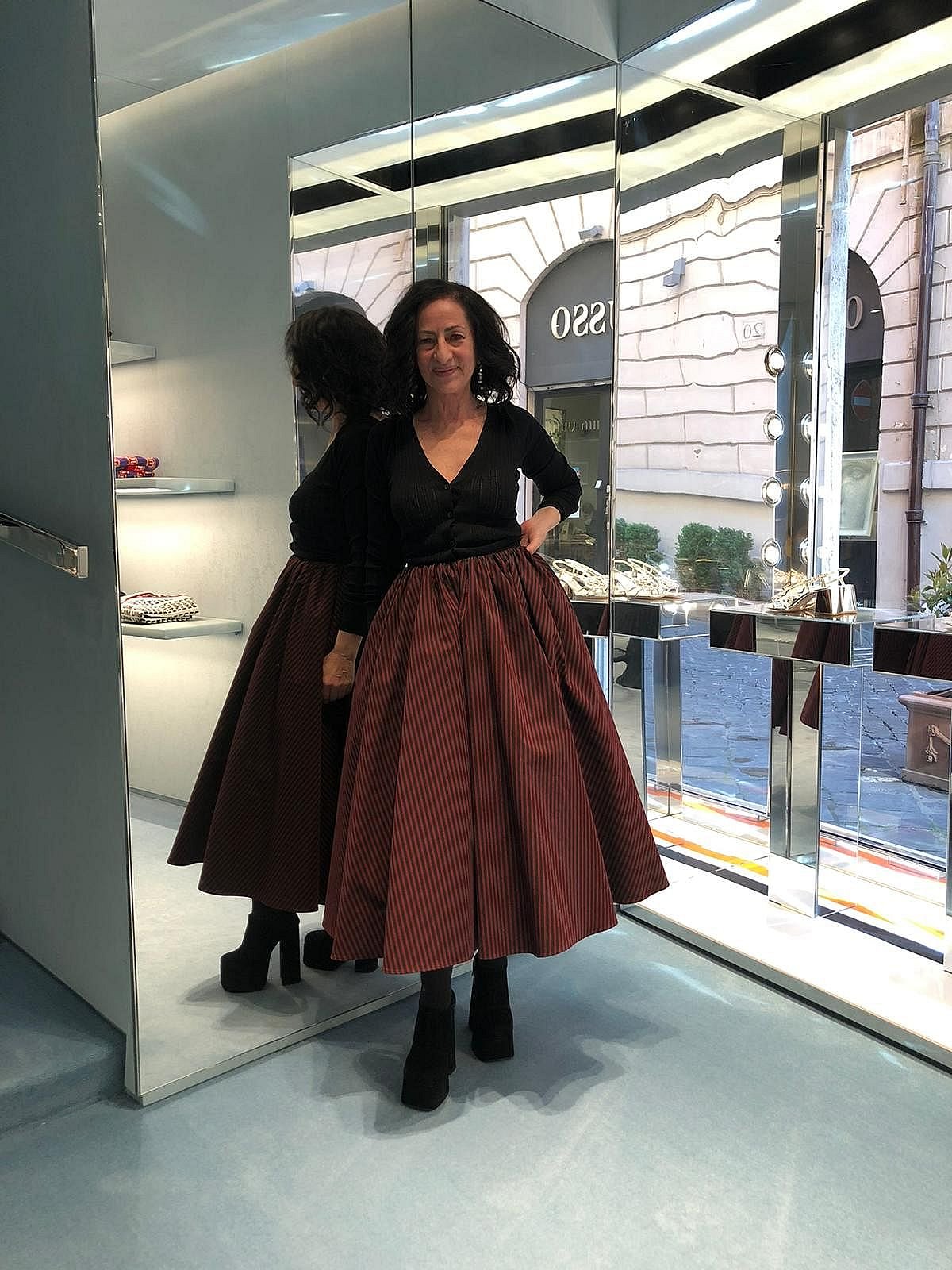
2021 Rome & 1947 Paris: How Skirt Hemlines ‘Indicate’ Crisis
Link to original story: https://www.thequint.com/voices/opinion/paris-1947-post-world-war-italy-2021-covid-crisis-fashion-industry-christian-dior-skirt-hemline-indicator-theory-stock-markets#read-more
Credit/discredit goes to the OP
Paris, 1947.
It’s been a little over a year since World War II ended. Rubble and scars, on buildings and on people, are still there, but one cannot see them here. An empty road lined with bare trees — and an empty sky.
A lady stands on the pavement, wearing a straw hat, a tight white jacket that enhances her tiny waist, and a long, wide, flowing black skirt. Black gloves, white leather shoes.
France, like the rest of Europe, is literally on its knees. One of the most important industries in the country, fashion, shut down during the war because of Nazi occupation. Fabric is almost impossible to find, and if you find some metres of cloth, you have to buy it with ration cards or at the black market. Even Queen Elizabeth of England, who just got married, has had to buy the silk for her wedding gown using ration cards.
How Christian Dior’s Iconic ‘New Look’ Was Born From the Vestiges of War
War-ravaged France, once the home of fashion, is striving to get back on its feet. And here comes a lady in a white jacket, being photographer on an empty street against an empty post-war sky, by Willy Maywald.

Little does she know that she is going to become an icon for the times to come. An icon of fashion, but above all an icon of the Renaissance.
The jacket and the skirt are by Christian Dior, the scion of an industrial family-turned fashion designer. Monsieur Dior has been approached by industrialists and by the government to revive the fashion, textile and embroidery industry, and give them a much-needed boost.
This was a balm for the industry, which had started to flourish again, and also give an impetus to economy at large through so-called ‘satellite activities’.
France, and along with it Europe, soon fully recovered amid the economic boom of the Sixties.
How Italian Fashion Industry Was Choked by COVID
Italy, 2021.
Miu Miu and Prada's windows are full of wide, long skirts with underskirts and crinoline. Dior, in France, still scores points on the modern version of the T-Bar. There is no visible debris or rubble this time, and the sky is a clear blue, but nevertheless, a ‘war’ — but of a different kind — is being fought over the past 15 months, and this has left invisible scars on millions.
Many have lost their jobs by now, because of entire businesses and industries downing their shutters for good.
Fashion is one of the main industries in Italy. Fifteen months of people being forced to stay home has strained many resources, for both the fashion industry and for satellite activities. And the long, flowing skirts are back.
What is the Skirt Length Theory?
The Skirt Length Theory is no joke, after all. First suggested in 1925 by George Taylor of the Wharton School of Business, the Hemline Index proposes that skirt hemlines are higher when the economy is doing well, and hemlines drop low when there's an economic crisis.
Supporting the premise was the fact that cost and availability of fabrics have historically affected the hemline of skirts, as claimed by economists. During a boom, when producers typically charge more for their yarn or textiles, designers would make skirts shorter to cut costs.
His theory has been confirmed in more recent years by Desmond Morris, a British ethologist and scholar of human behaviour. In his book ‘Manwatching: A field Guide to Human Behaviour’, Morris hypothesised that, starting with World War I, a close relationship was established between skirts and periods of expansion or depression. During a boom, skirts get shorter; the opposite is true in times of crisis.
The Long & the Short: Is the Hemline Index ‘Accurate’?
In his book, Morris published a graph that goes from 1921 to 1977, the year the volume was published. Long in ‘21, shorter until 1929, even if only slightly, then the hems would lengthen after the global crisis, remaining more or less long with some small ascents.
In 1948, the skirts were very long; then from 1950 they grew shorter — only by a centimetre or two though — and then, they went down to calf-length in ‘67, ‘68 and ‘69. They also became long in 1971 with the oil crisis, and short again during the ‘80s Euphoria.
The Hemline Index was accurate in 1987, when designers switched from miniskirts to floor-length skirts just before the market crashed, while short skirts were in vogue in the 1990s, when the tech bubble was increasing.
Morris also explains that designers have tried several times to oppose this relationship between economy and length of the dress — when the stock market goes up, skirts follow, and when the stock goes down, skirts too — but always with disastrous results.
So, let's go with the flow.
Rome, Italy, 20 days ago. There is not visible destruction or rubble, and the sky is blue, but the roads are empty. A lady walks down the street, wearing her personal homage to the T-Bar suit: a wide Miu Miu skirt with an underskirt and crinoline, and an old Prada jacket resembling the style of the early '50s.

Her personal homage to the T-Bar suit, her personal homage to hope. The hope to once again see roads full of people, and many, many girls wearing mini-skirts. The hope to know that, finally, the war is over.
(Francesca Marino is a journalist and a South Asia expert who has written ‘Apocalypse Pakistan’ with B Natale. Her latest book is ‘Balochistan — Bruised, Battered and Bloodied’. She tweets at @francescam63. This is an opinion piece, and the views expressed above are the author’s own. The Quint neither endorses nor is responsible for them.)
